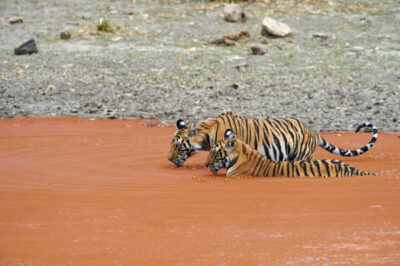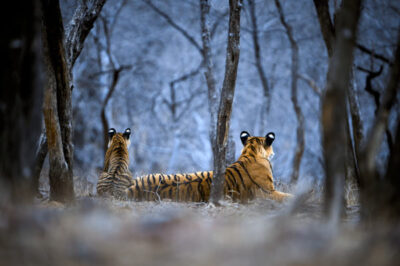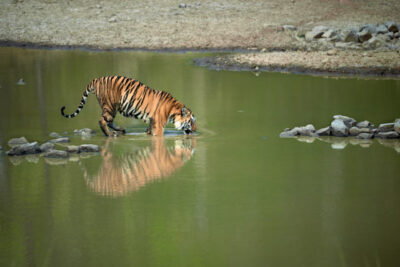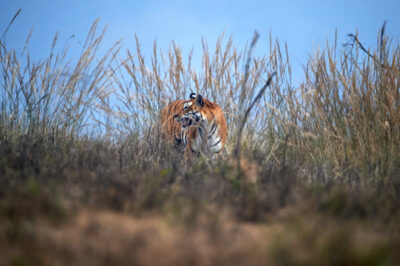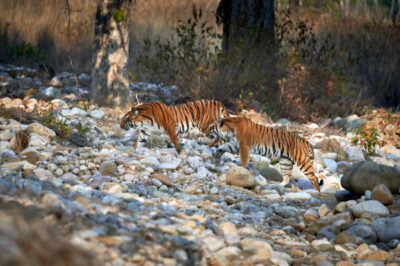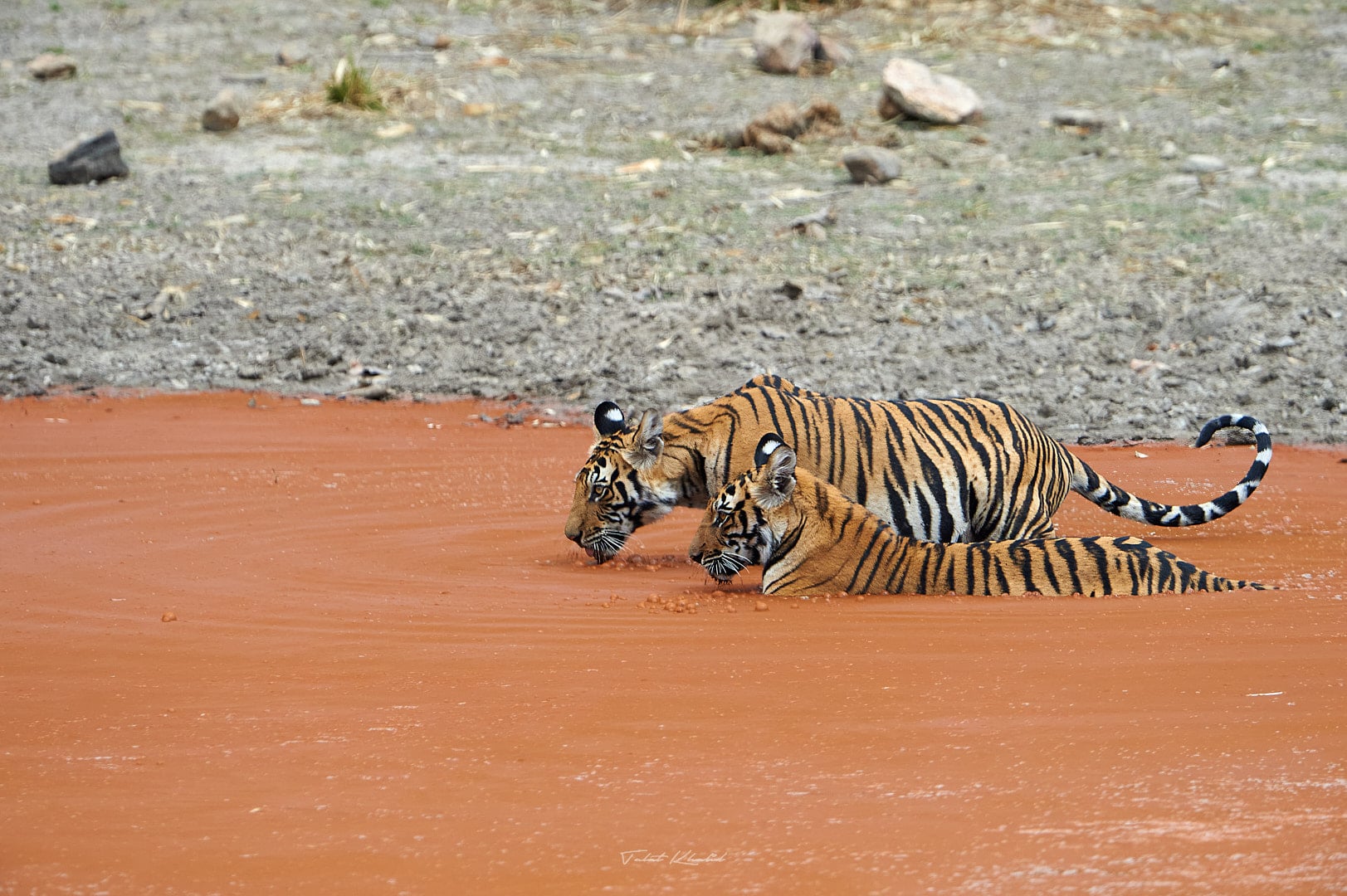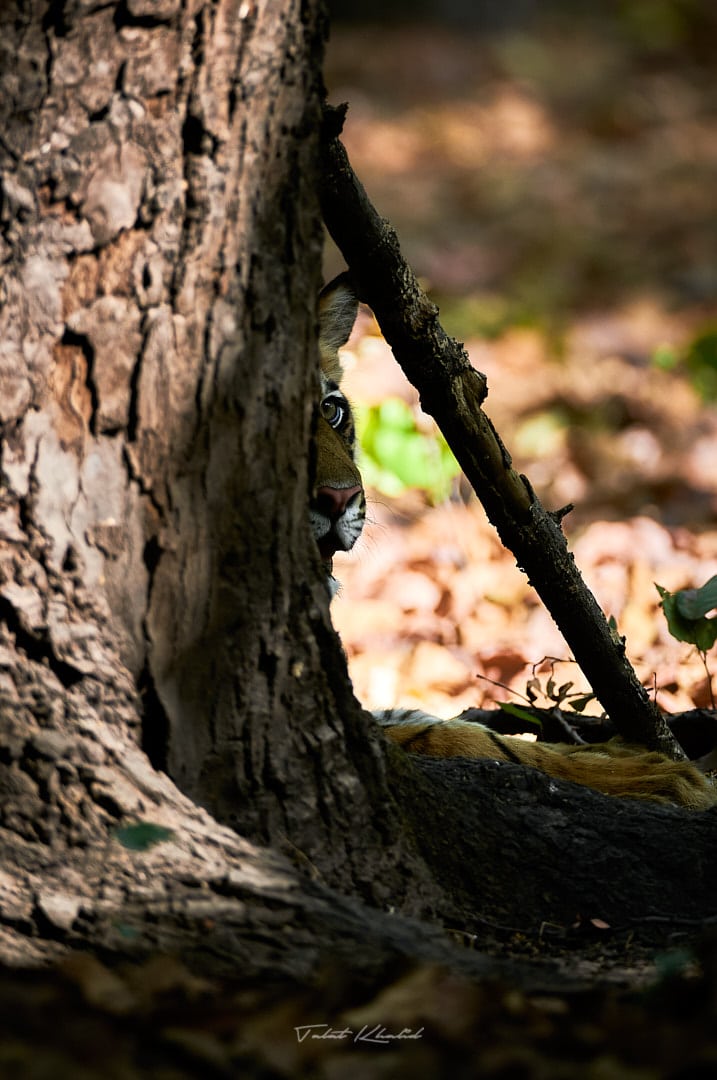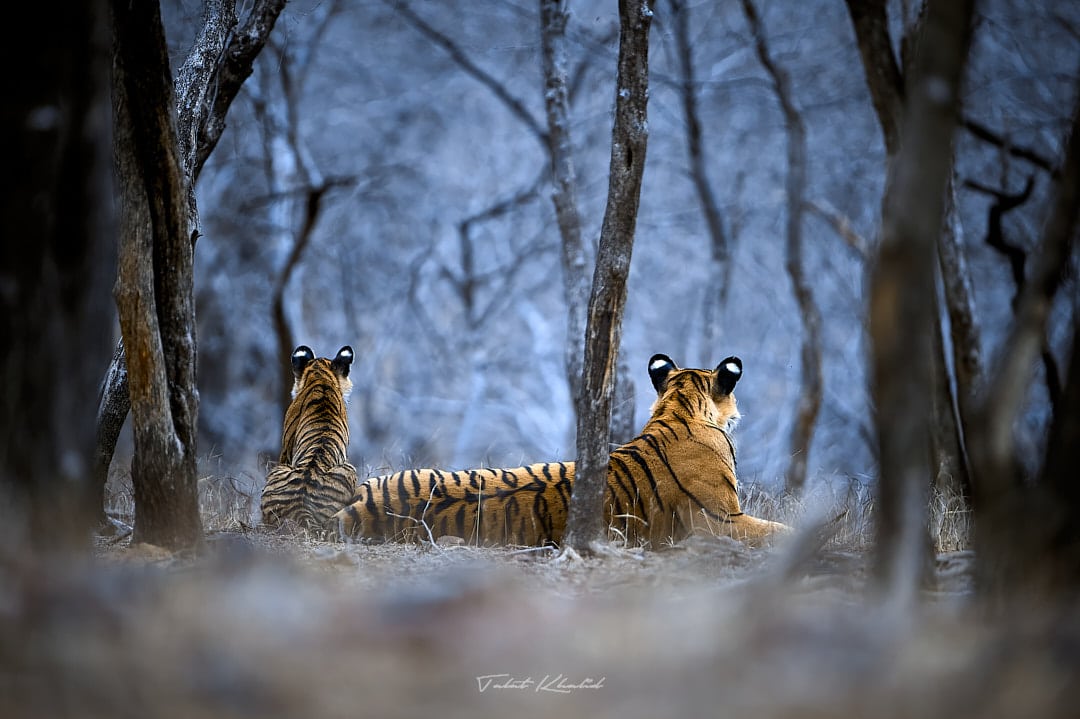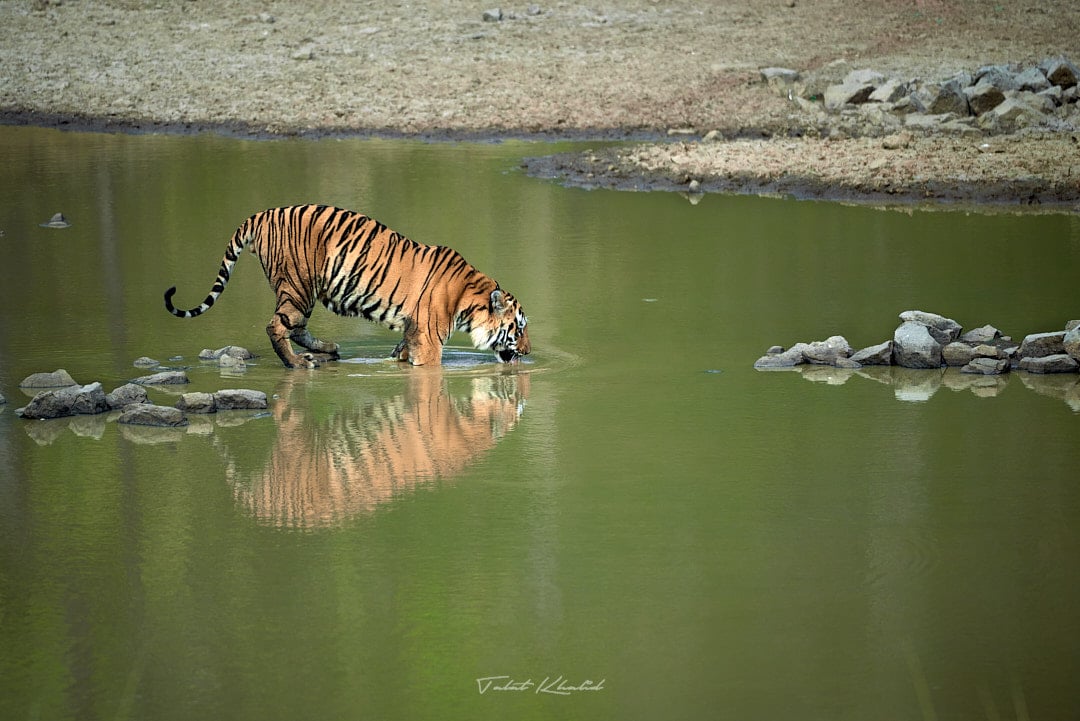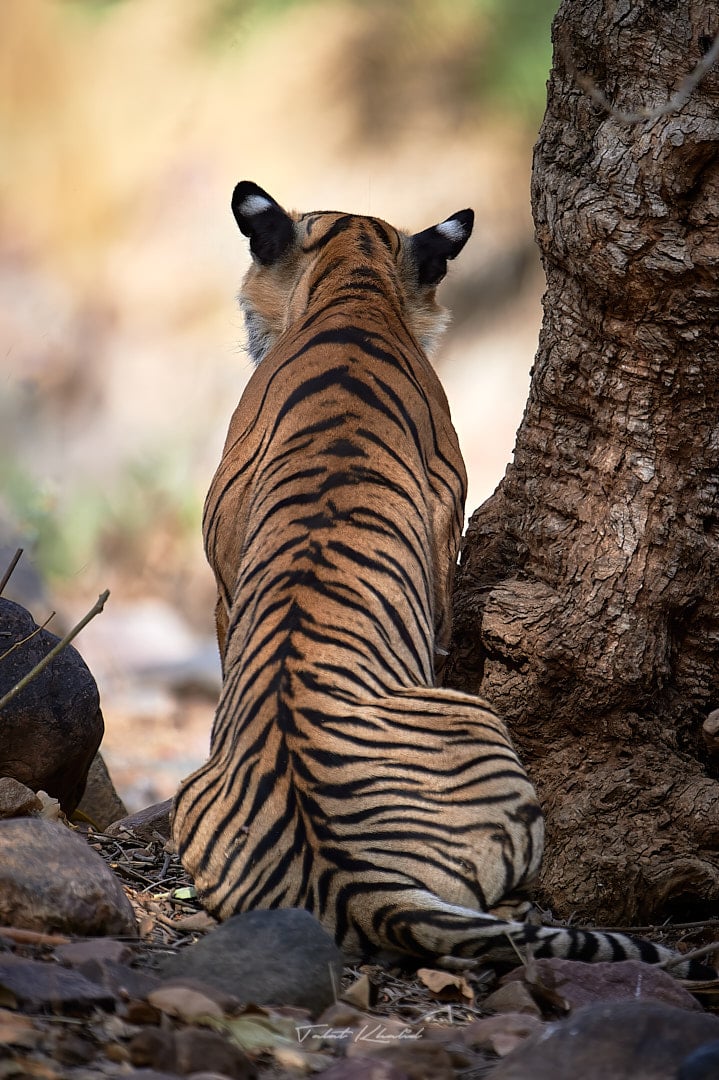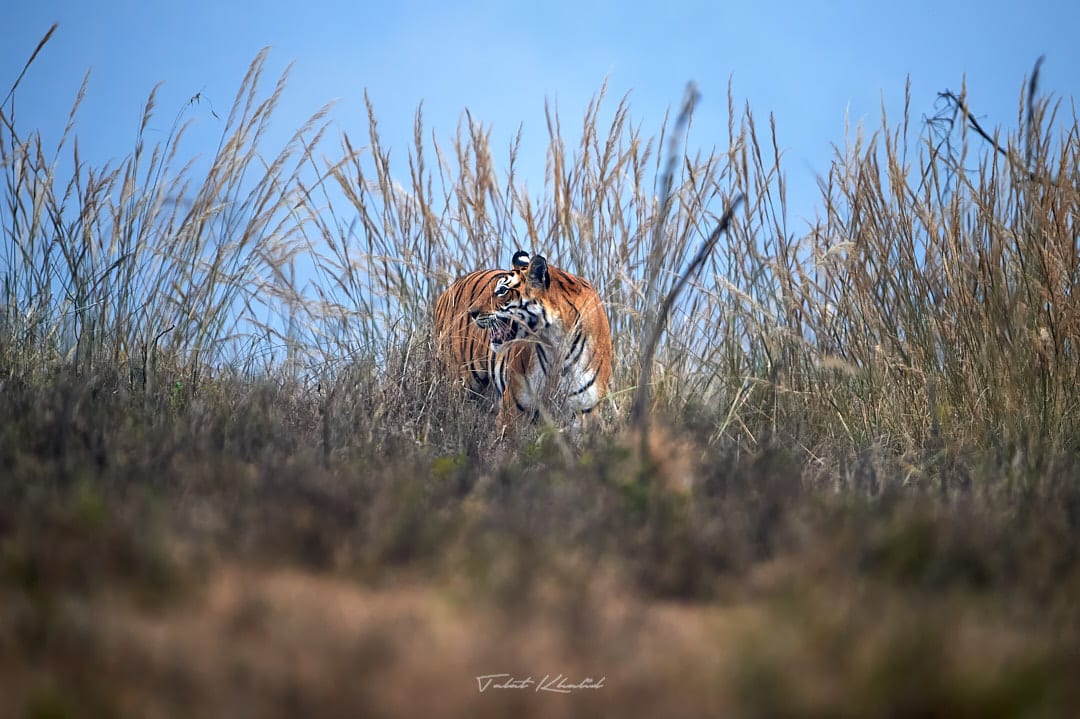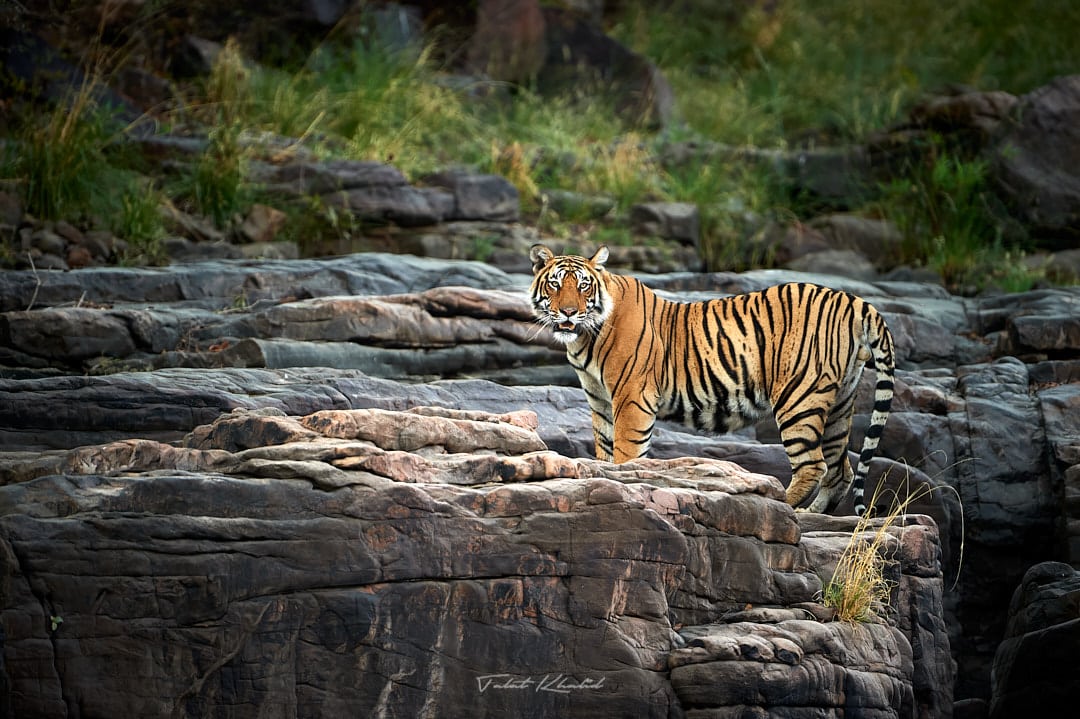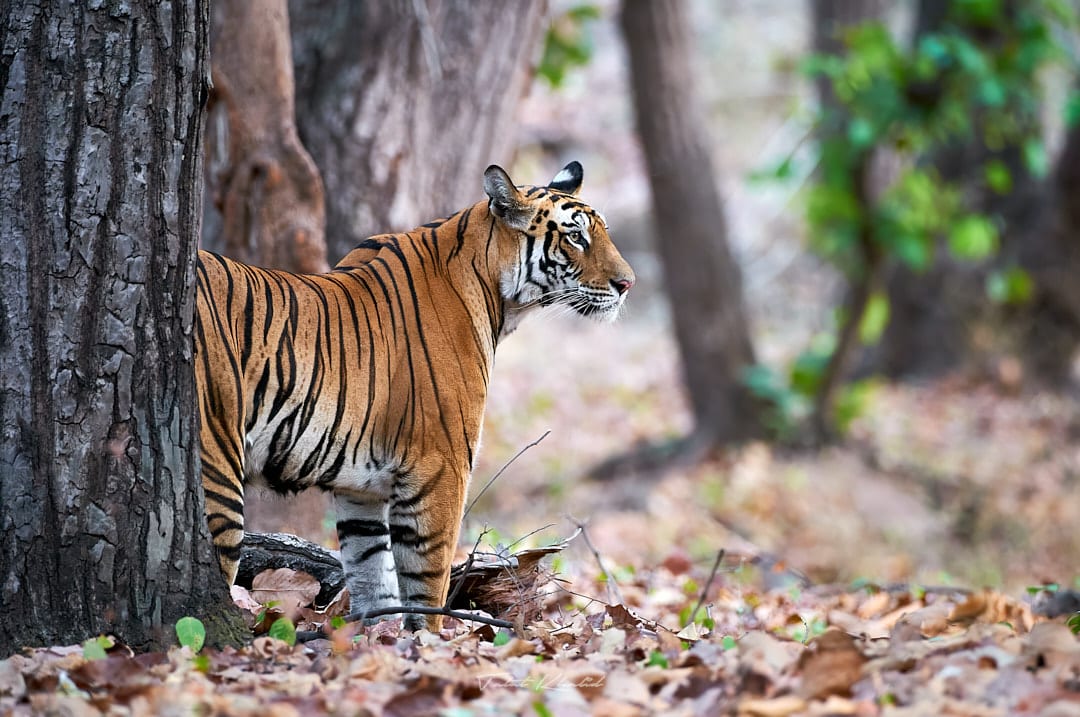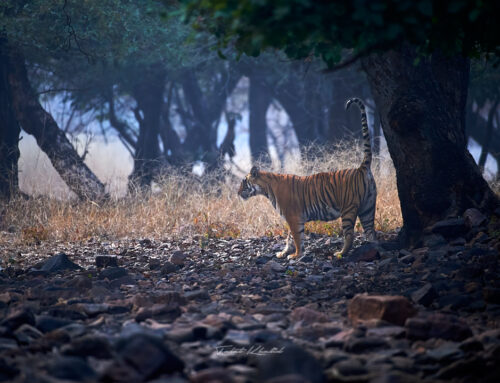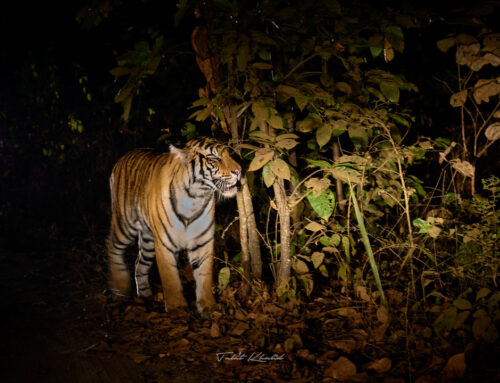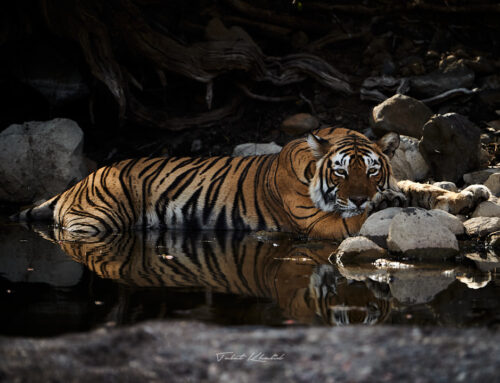Tiger Safari in India
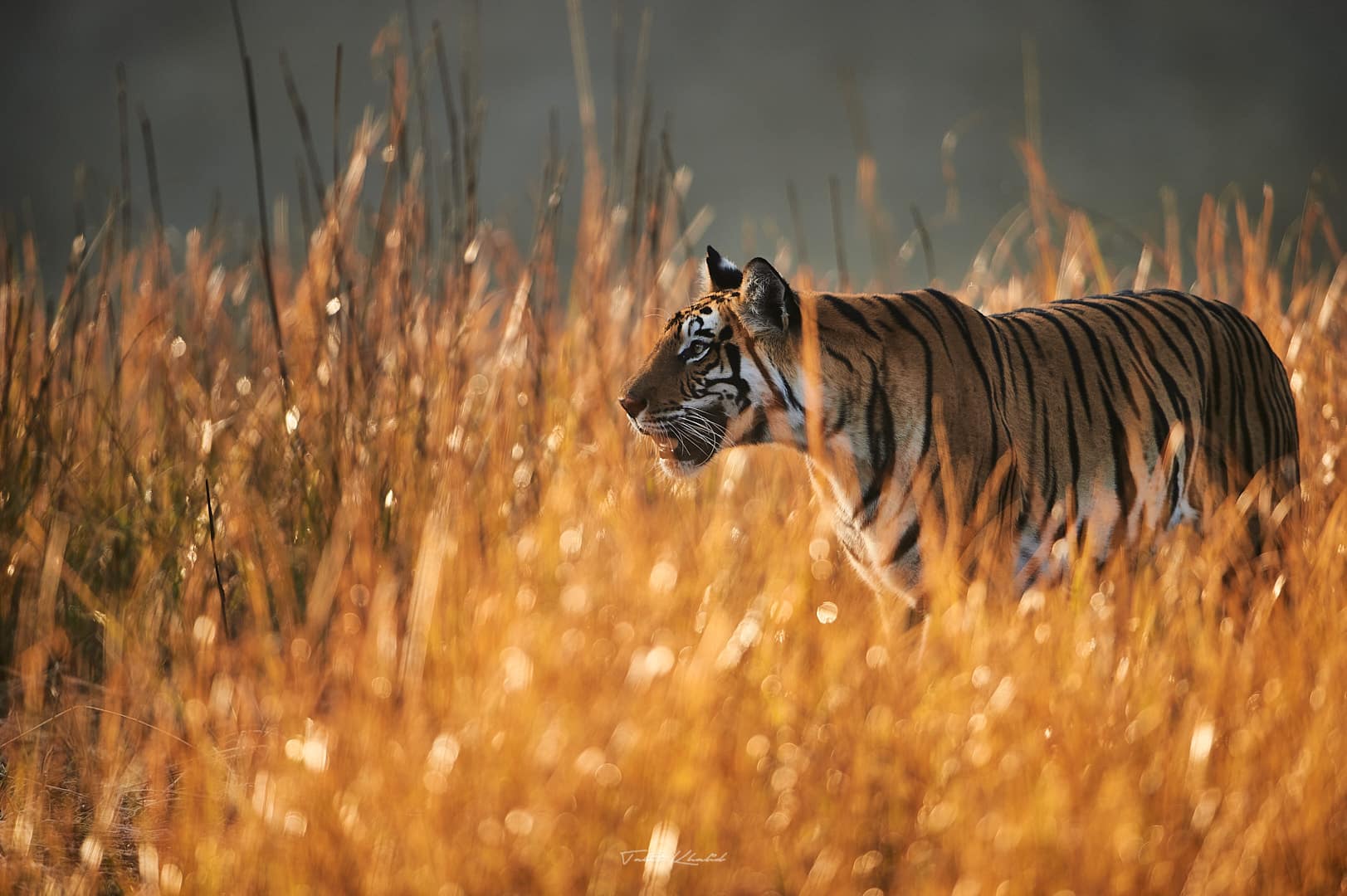
Table of contents
Introduction to Tiger Safari in India
The Best Tiger Safari in India is in Bandhavgarh, Ranthambore, Tadoba, Kanha, Corbett, Pench National Parks etc.
India is a land blessed with a variety of wildlife and birds. Among its most iconic animals is the Bengal Tiger (Panthera Tigris Tigris). It is the national animal of India. The Tiger is both beauty and power in one body. India has the largest population of Bengal Tigers in the world. About 3682 according to the recent census. This is a good improvement and shows the conservation efforts of many. Rapid development, loss of habitat, and poaching over the years have threatened their nos and existence itself. Conservation is very important not only for tiger’s survival but also for other wildlife and birds that live in the forests of India.
India’s tiger reserves are biodiversity hotspots where diverse ecosystems flourish. These habitats are home to not only Bengal tigers but also a rich variety of wildlife, including deer, leopard, and vibrant birdlife. Marshlands and water bodies have aquatic species. Preserving these ecosystems is important, as they represent the harmonious co-existence of species.
Project Tiger was started to protect the tigers and it has been so far successful. When you protect the tiger you also protect many other species of animals, birds, insects, reptiles, and even rivers & forests themselves. Under Project Tiger, a lot of wildlife areas were declared protected, and strict laws were in place. Many of these are today the most popular tiger parks in India.
A tiger safari in India is not just about watching these big cats in their natural environment, but also an opportunity to enjoy the rich biodiversity of a forest. Furthermore, tiger safaris and tours contribute significantly to conservation efforts. The revenue generated from tourism is used for the protection of the forest and also to help the local community.
Tourism through tiger safaris and tours is a major conservation tool. Tourism gives livelihood to many local communities in the Forest dept, as Safari drivers, guides, in the various resorts, etc. The locals who work directly or indirectly in the forest are a major force in protecting and changing the minds of other people living around the forest.
The following sections will explore the Best tiger safaris in India, the top tiger reserves in India, the best times to visit, and wildlife that shares in these forests with the tiger.
Tiger Species in India
India is home to primarily the Royal Bengal tiger (Panthera tigris tigris), also known as the Indian Tiger. This majestic big cat is characterised by its distinctive orange coat with bold black stripes. Renowned for its strength and grace, the Bengal tiger depicts an iconic symbol of India’s rich wildlife heritage.
Tiger Behavior and Habits
Tigers are solitary animals and have large territories.
They use roars, grunts, and chuffing sounds to communicate.
Males have larger territories than females. There may be at least 4-5 female territories overlapping a male territory. A female can have a 15-20km territory while a male can have 30-50 km of territory.
Tigers are active at night and during twilight. They have great night vision.
They hunt by stalking and have to get close before they leap in full force and speed to kill their prey. Herbivores like deer and wild boar are their primary targets. In some forests where deer are less, they hunt Gaur (Indian bison), elephant calves, and even young rhinos.
Tigers love water unlike other big cats and are expert swimmers. They love to sit in waterholes in the summer to cool themselves.
They often drag the kill to a remote area to avoid any disturbance from other animals.
Males and Females come together for mating. Mating encounters between males and females can last for 3-4 days and they mate every few hours.
After a three-month gestation period, 2 to 4 cubs are born. Mother tigers spend a lot of time caring for and gradually teaching cubs survival skills.
Tiger cubs usually stay with their mothers for about 2-3 years.
Cubs gradually learned to hunt and become independent before they established their territories. Males usually have to move away from their mothers’ territory to form their territory. Females make their territory close to their mothers or many times just take over their mothers’ territory.
Although they are solitary Male Tigers have been seen to babysit their young cubs and sometimes raise their cubs. Male Tigers join us for a family meal now and then.
Knowing these behaviors provides an understanding of tigers and how to protect them in the future.
Best Tiger Safari Parks
There are many Tiger National Parks in India, however the best tiger safaris in India happen only in a few national parks. Tigers of these parks are habituated to tourist vehicles and hence they don’t hide or run. The below national parks are the most popular for tigers.
Bandhavgarh National Park
Bandhavgarh National Park is most famous park for tiger safari in India. It is located in Madhya Pradesh, India. It is renowned for its thriving population of Bengal tigers, making it a popular destination for tiger enthusiasts. The park’s dense forests and varied fauna offer a rich and natural experience. Not only is it a haven for tigers, but it also shelters a wide range of other wildlife species. If Tiger is your species of interest, then Bandhavgarh is a must to visit.
Read More…Bandhavgarh National Park
Recommend Bandhavgarh Tiger Safari
Bandhavgarh Tiger Photography Tour.
Focus on Tigers at Bandhavgarh and Ranthambore
Ranthambore National Park
Ranthambore National Park is a huge wildlife park near the town of Sawai Madhopur in Rajasthan, India. It was once a royal hunting ground. It is home to tigers, leopards, and marsh crocodiles. Its scenery is a fabulous blend of wildlife and ancient relics. Its ruins include the impressive 10th-century Ranthambore Fort and other Moghul period structures.
If you are fascinated by the thought of a tiger roaming in the ancient ruins then Ranthambore will surely impress you.
Read More…Ranthambore National Park
Recommended Ranthambore Tiger Safari
Ranthambore Tiger Photography Tour
Focus on Tigers at Bandhavgarh and Ranthambore
Tadoba National Park
Tadoba Andhari Tiger Reserve (TATR) is a pristine and unique ecosystem situated in Maharashtra, India. In recent times due to its healthy population of tigers and their regular sightings, Tadoba has become a favorite with those who wish to see and photograph the majestic Bengal Tiger. It is also a good park for Sloth Bears.
If Tiger is your interest and have already seen Bandhavgarh or Ranthambore then
Recommended Tadoba Tour
Pench Tadoba and Kanha Photo Safari
Kanha National Park
The lush sal and bamboo forests, grassy meadows, and ravines of Kanha inspired Rudyard Kipling for his famous novel “Jungle Book”. The Park’s landmark achievement is the preservation of the rare hardground Swamp Deer (Barasingha), saving it from near extinction.
Aside from its diverse wildlife and bird population, the frequent sightings of Tigers roaming in the wild at Kanha Wildlife Sanctuary remain the most popular attraction.
Recommended Kanha Tour
Kanha Tiger & Barasingha Photography Tour
Pench Tadoba and Kanha Photo Safari
Corbett National Park
Corbett National Park is a forested wildlife sanctuary in Uttarakhand State of India. It is one of India’s most picturesque and pristine parks. Corbett has the honor of being India’s oldest and most prestigious National Park. It is the park where Project Tiger was first launched in 1973. Animals, including tigers, leopards, and wild elephants roam along with hundreds of species of birds. It is among the few tiger reserves in India that allow overnight stays in the core of the National Park. It’s also home to the Gharial a fish-eating crocodile. There are several Forest rest houses inside the park most popular are Dhikala, Bijrani, etc.
Recommended Corbett Safari
Corbett Tiger Photography Tour
Pench National Park
Pench National Park, situated in both Madhya Pradesh (preferred) and Maharashtra, India, is a biodiverse haven for wildlife lovers. Named after the Pench River that runs through it, the park is famed for its rich flora and fauna. It’s home to diverse species including tigers, leopards, etc., and numerous bird species. Pench also played a significant role in Rudyard Kipling’s “The Jungle Book,” with its lush environs believed to have inspired the book’s setting.
Compared to the other parks above Pench has a smaller tourism area. Although it is good on its own, It is a better combined with parks like Kanha, Tadoba that are close to it.
Recommended Pench Safari
Best Time for Tiger Safari in India
For most tiger parks in India, the best time for a tiger safari is summer. The forest waterholes shrink and foliage is less. The animals including tigers visit the remaining waterholes. Tracking tigers is easier.
Mar – June is the summer season. For frequent sightings of tigers, this is the season.
Once you have visited in summer you can also visit in winter as the weather is very cool and the forest is green and the early mornings misty. Finding Tigers is difficult but when you find one it’s worth the effort.
Read more…Best time to see and photograph tigers in India
What to wear on Tiger safari in India
On Safari wear loose and comfortable clothes. Full-sleeve shirts and full pants are ideal especially in the Summer sun. They also help protect from insect/mosquitoes.
Earth colors like greys, olive, beiges, browsn and forest greens are prefered.
Clothes should according to the season. In Summers they can be light cotton or quick wicking clothes. In Winter you will need to pack a few warm clothes and head wear like a warm beanie or felt hat.
A windproof jacket helps in the early morning chill on a safari drive. Sunscreen for summer.
Walking on safari is quiet rare and mostly not allowed. So you can wear any type of shoes that are comfortable. Flip-flops or sandals are also fine in summers. Choose based on your activity and season.
If the safari involves hiking or trekking in forest areas then you should pack hiking/tekking boots based on the terrain.
Read Details about Packing for Wildlife Photography in India
Responsible & Safe Tiger Safari
When you select a safari choose People or Company that is passionate about wildlife and has a commitment to sustainable and ethical practices. Also choose the locals as much as possible.
The Best Tiger Safari is one that is safe for people and animals. Always maintain a safe and respectful distance from the animals. Never try to feed, touch, or provoke wild animals or even birds. Remember, these are wild animals, and their behavior can be unpredictable. Listen to and follow the instructions of your guides and naturalists at all times.
Carry out all litter and waste from the safari area. Avoid littering, and if you see any litter, pick it up and dispose of it properly. Leave the habitat as you found it, so future generations can enjoy the same experience.
Keep noise levels to a minimum. This means refraining from playing loud music, shouting, or making sudden movements that could startle the animals. The objective is to allow the animals to behave naturally and without undue stress.
Be carefull when you see a tiger. One of the most common sights is people dropping their camera or lens when the tiger is out and moving. There have also been incidents of people falling from vehicles. Excitement is natural when you see a tiger but keep your things and self in balance. Dont stand on the seat when your vehicle is moving.
Photographers on Tiger Safari in India
Photographers have a responsible role to play. The above applies to them as well. We all love to take a closeup from the front, however the animal’s right to free movement is most important. Let it decide where and how it wants to move. Always make sure your vehicle is not blocking its way. A comfortable animal will give you more time and more natural poses. Great photographs are taken by having patience and spending more time with the animals. You won’t get all the greatest photographs in a day. Sometime its frustating to follow all the rules however keep in mind they exist for a reason. There are rules which make no sense, but that is part of a photographers life. You adapt and make the best in any situation.
Sometimes due to many irresponsible tourists and even photographers the rules of the park become strict. If this continues new wildlifers and photographers will never get a chance to enjoy a great tiger safari.
For Photography Read Tiger Photography: A Guide to Capturing these Majestic Cats
Check the Tiger Photos Taken on Safari.
Tiger Safari Booking & Types
There are 2 safaris, one in the Morning and one in Afternoon. Safaris are in 20 percent of the core national park. Besides the core, the buffer areas have been opened for wildlife safaris in many parks.
Tiger Parks allow limited vehicles and have limited permits. Safari Permits need to be booked in advance at least 3-5 months depending on the park. 4 months advance for Bandhavgarh, Kanha, Pench, etc. Tadoba is about 2-4 months in Advance. Permits for Tiger Safari in Ranthambore has to be booked one year in advance. Booking in Advance allows us to choose the best areas of the park for safari.
Most Tiger Reserves offer safaris in 4×4 vehicles called Gypsy and Canter a 20 seater minibus. Elephant Safari has been stopped for many years now in many parks. There are a few like Corbett where you can still do a small 1 hrs Elephant Safari.
Apart from normal two safaris, for photographers and videographers, some parks like Bandhavgarh, Kanha, Tadoba, etc. offer a Full Day Permits. Ranthambore recently stopped its Full and Half day permits.
Accommodations
Most popular national parks have many options to stay, maybe a little more than needed. From Budget to Luxury,
A few minutes on Google and TripAdvisor should help in finding the best in your budget. All accomodations in national parks are mostly outside and around the parks.
Jim Corbett is one park where you can stay inside the core area of the national park. The accommodation is simple and have limited facilities however, they are inside a prestine area of the forest.
Best Tiger Safari in India
Below is a list of the best Tiger Safaris in India. Whether you are a nature lover or a photographer these will satisfy most. It is best to do 2 parks for better variety and sightings.
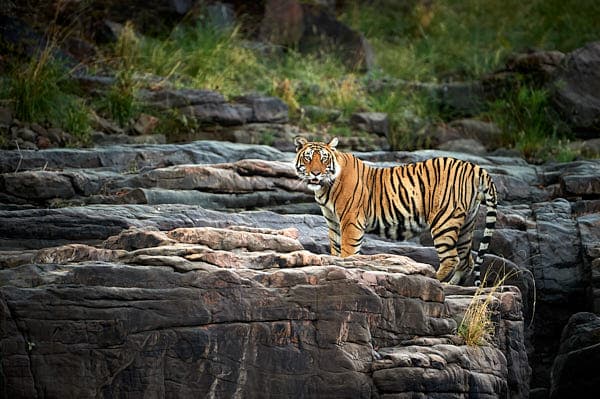
Ranthambore Tiger Photography Tour for 6 days & 5 nights. The ancient relics of the past make its landscape unique. The best place you can witness tigers living in ancient ruins.
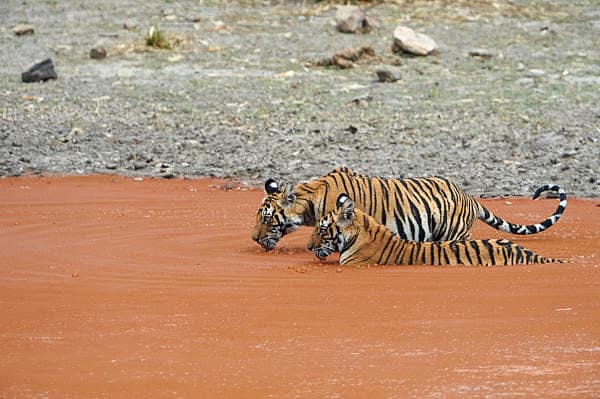
Bandhavgarh Tiger Photography Tour for 6 days and 5 nights. One of the few places where you can still expect to see a tiger at close distance.
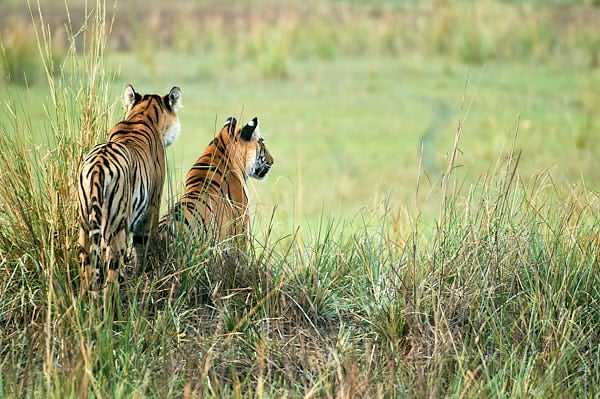
Tadoba Tiger Photography tour for 6 days and 5 nights. Tadoba Andhari tiger reserve (TATR) also known as the Jewel of Vidarbha. Highly recommended for Tigers.
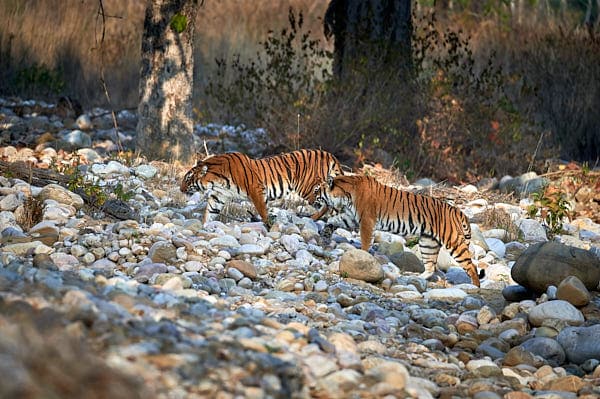
Corbett Tiger Photography Tour for 7 days and 6 nights. Staying inside India’s most picturesque and pristine jungle is rewarding. A Dream come true.
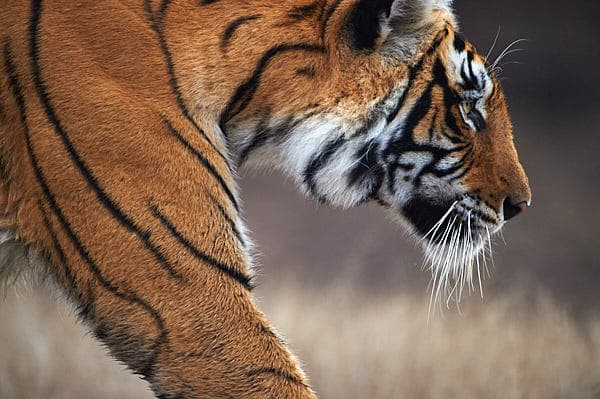
Tiger and Barasingha Photography in Kanha for 6 days and 5 nights. Wild Bengal Tigers and Diverse Wildlife including the Rare Barasingha, endemic to this park.
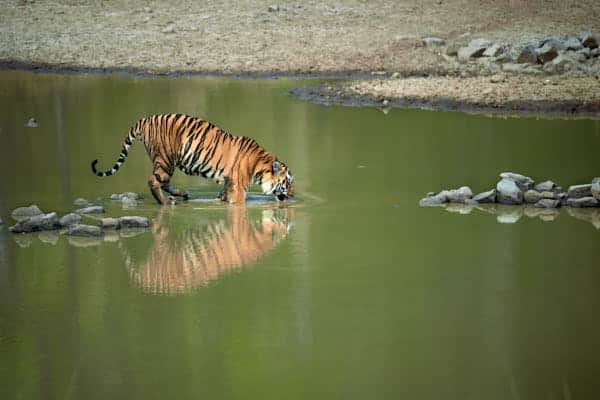
Pench and Tadoba Photo Safari for 8 Days and 7 Nights with 13 Safaris. Pench and Tadoba for Tiger, Leopard, Sloth bear & Wild Dog along with other wildlife and birds.
Gallery
Conclusion
Preserving India’s Tigers for Future Generations is the most important aim. It is only possible if we can ensure safe wildlife areas, corridors for them to migrate, sustainable & responsible tourism.
For First time visitors Bandhavgarh and Ranthambore should be the top choices. Remember Ranthambore has to be booked one year in advance and Bandhavgarh at-least five months.
